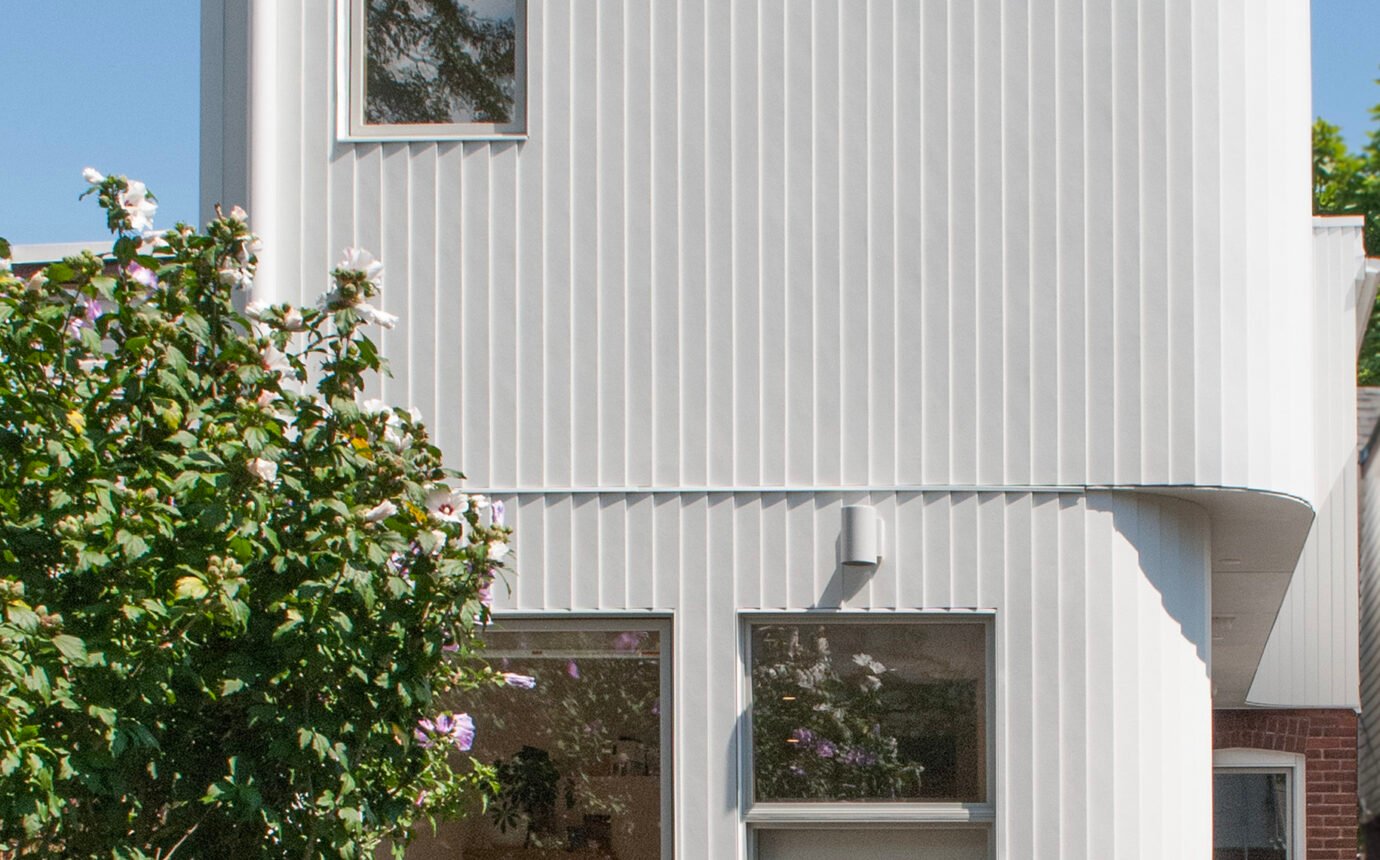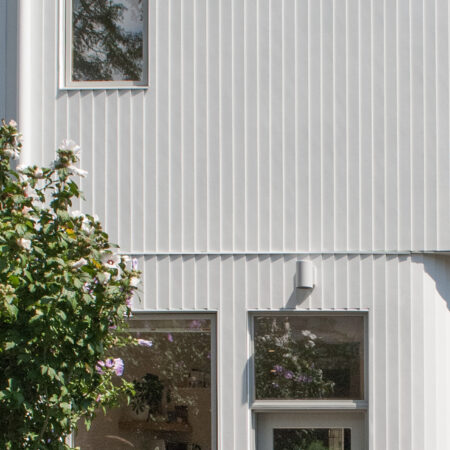How A Design Duo Reimagined Their East York Home


For architect Michael Blois and interior designer Lisa Blois, it was about carving out a bit more space for their growing family—and doing so with care
Rear additions in Toronto often lean hard into contrast—flat roofs, crisp lines, bold materials. But when Michael and Lisa Blois set out to renovate their 1920s semi in Danforth East York, they took a different approach. Their curving extension—quiet, pale, and refreshingly un-square—expands the home without overpowering it. It doesn’t try to reinvent the streetscape. It just fits gracefully, thoughtfully, and on their terms.
That measured approach reflects the couple’s day jobs (he’s an architect, she’s a registered interior designer) but also the realities of family life. With two kids and full-time careers, they weren’t chasing more house—they were chasing better flow, more light, and enough breathing room to make the old space work harder. “We just wanted it to feel cohesive,” says Michael, “like it flowed naturally from the existing house into the backyard.”
The couple’s goal was to extend the home without overpowering its 1920s character—or the modest scale of its neighbours. In response to the proliferation of boxy infill projects in their area, they pursued a different tact: a subtle, curvilinear form that softened the home’s rear elevation and blurred the line between new and old.
From the garden, the effect is striking but gentle. The addition’s rounded corners, vertical cladding, and minimal detailing offer a fresh take on the neighbourhood vernacular without shouting over it. “We were thinking about how a building can mediate between the typical two-storey semis and the organic forms of the rear garden,” Michael explains. “Something that feels soft and familiar, but distinct.”
Inside, the renovation unfolds with similar intent. A new rear addition houses a kitchen and workspace that step down slightly toward the backyard, increasing the sense of volume and opening up views. A bedroom was added above, cantilevered just enough to offer breathing room without pushing the home’s footprint beyond reasonable limits.
The project’s defining feature—those graceful exterior curves—proved one of its greatest technical challenges. Rather than opting for standing-seam or corrugated steel (common choices for navigating curved walls), Blois experimented with a vertical application of standard Hardie board siding. It was a novel use of the material—one the manufacturer hadn’t seen before—but the approach allowed for a clean, tailored look that preserved the design’s softness. “We mocked it up in different ways, worked through how it would fasten, and even bent some of the strapping with steam to make it work,” he says.
Collaborating closely with their contractor, Sebastian of Silver Creek Developments, the Bloises also found inventive ways to handle tricky details—like pouring curved concrete foundation walls using repurposed hockey rink boards. “It was great to work with someone who was excited by the challenge,” Michael says. “That relationship made a huge difference.”
In many ways, the project became a hands-on design lab for the couple, who both work for large firms by day and executed this renovation independently. While Michael brought architectural vision, Lisa—an ARIDO-registered interior designer—played a pivotal role in shaping the layout, finishes, and functionality. Her early request for a sightline from the kitchen to the garden became a key design driver, as did her desire for a calm, light-filled interior palette. Together, they curated a space that feels warm, simple, and deeply personal.
Still, the project wasn’t without compromise. “When you’re the one writing the cheque, it’s harder to justify certain design moves,” Michael says. “But I don’t think we compromised the main concept. It still has the clarity and character we envisioned.”
Living in the home has only deepened his connection to the work—and his appreciation for the builder-designer relationship. “On bigger projects, that connection often gets lost. But here, Sebastian and I would meet every morning, sketch out ideas on a scrap of drywall, and figure it out together. I’ve been trying to bring more of that energy into my professional work.”
The finished home spans just 1,340 square feet, but every inch feels considered. “You always see the tiny things that didn’t quite line up,” he says, “but the important part is that it feels like home. And I’d be proud to have designed this for a client just as much as I am for us.”



































